HOME > Fish Species in Virginia Beach
Decorate your home or business with permanent LED lighting!
Decorate your home or business with permanent LED lighting!
There are numerous types of fish to catch in the salt and brackish waters of Virginia Beach. We are going to mostly discuss the in-shore and surf fishing types here. Off-Shore fishing is completely different and includes all of the big game fish and anything else that lives in the ocean. See our Fishing in Virginia Beach page for more information.
Most of the fish below are seasonal and can be caught from popular locations like the Virginia Beach Fishing Pier or in the Chesapeake Bay from a boat or shoreline.
Check out all of the popular fish below and be sure to download and print out our Fishing Knowledge Guide PDF to find out more about all of the fish, where to find them and how to catch them.

The Spanish Mackerel shows a green back. Its sides are gleaming and set apart with around three columns of round to circular yellow spots. They display a lateral line bending down from the upper end of the gill cover toward the tail. The main (spiked) dorsal blade is dark at the front. Back layers are white with a dark edge. Its single column of cutting edged teeth in each jaw (around sixty-four teeth altogether) are huge, uniform, firmly separated and leveled from side to side.
READ MORE ABOUT SPANISH MACKEREL MIGRATION AND FISHING METHODS
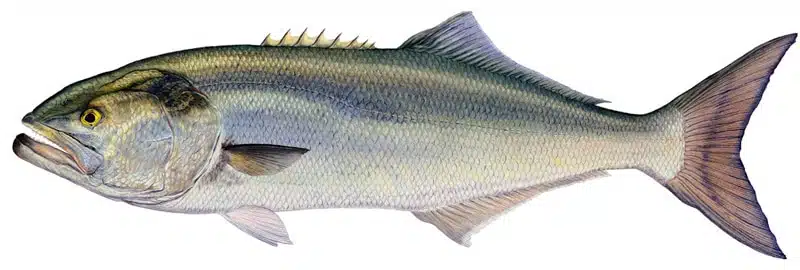
The bluefish is a reasonably proportioned fish, with an expansive, forked tail. The spiked first dorsal balance is regularly collapsed in a score, similar to its pectoral blades. Tinge is a grayish blue-green dorsally, blurring to white on the lower sides and paunch. Its single column of teeth in each jaw is uniform in size, blade edged, and sharp. Bluefish ordinarily run in size from seven-inch (18-cm) “snappers” to a lot bigger, in some cases weighing as much as 40 lb (18 kg), however fish heavier than 20 lb (9 kg) are uncommon.
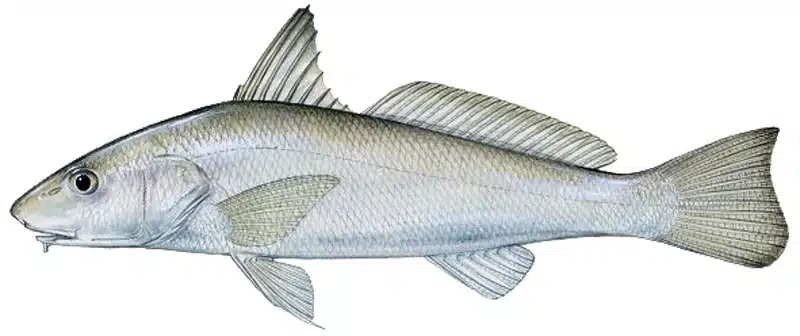
A bottom fish. They continue to reward bottom fishermen and some of them weigh about a pound. They can be located in the surf and near the end of the Virginia Beach pier, so move around if you aren’t catching them or any fish for that matter.
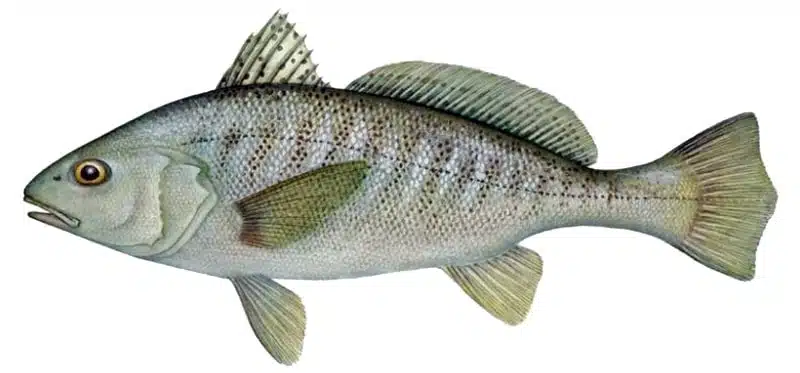
The Atlantic croaker, also known as hardhead, is one of the most well known saltwater fish caught in Virginia. These hard fighters are in some cases caught in extraordinary numbers by fishermen angling in the Chesapeake Bay and along the Virginia coast.
Croakers run from around 10 inches up to a beast fish of a few pounds. In many regions, you can keep Croakers when they fall in the 14-24 inch length. These fish are silver in color with metal flecks along their flanks. Croakers have a sharp spine on every gill plate. Their body shape is fundamentally the same as their bigger cousin, the red drum or redfish.
Virginia fishing piers docks are known for their croaker runs. Piers and docks along the Chesapeake Bay and waterfront shorelines are particularly beneficial. Along Virginia’s Atlantic Coast, the Virginia Beach and Sandbridge wharfs are great areas for getting croakers. In the Chesapeake Bay, there is the Sea Gull Pier, Lynnhaven Pier, and docks at Buckroe Beach, Kiptopeake, Morely’s Wharf, Saxis, and different areas.
Croaker are additionally caught in the larger rivers, with the James River fishing pier being one of the well known spots.
Besides fishing piers, a few jetties and seawalls along inlets are known to be great spots to get croaker. In Virginia Beach, Rudee Inlet and Lynnhaven Inlet are well known spots for getting croakers.
Croakers are likewise gotten while surf fishing. In Virginia, shoreline access can be found at Sandbridge, Virginia Beach and Assateague Island.
In Virginia, a wide scope of charter boat Captains offer croaker fishing trips. Probably the best places to go croaker fishing in Virginia incorporate Point Lookout, Reedville – Northern Neck, Hampton Roads, Onancock, Chincoteague, Wachapreague, Cape Charles and Kiptopeake.
For fishermen that need a more individual encounter, there are guided fly fishing trips in the shallow waters of the Chesapeake Bay. These territories of sea grasses and other structure offer the absolute best croaker fishing in Virginia.
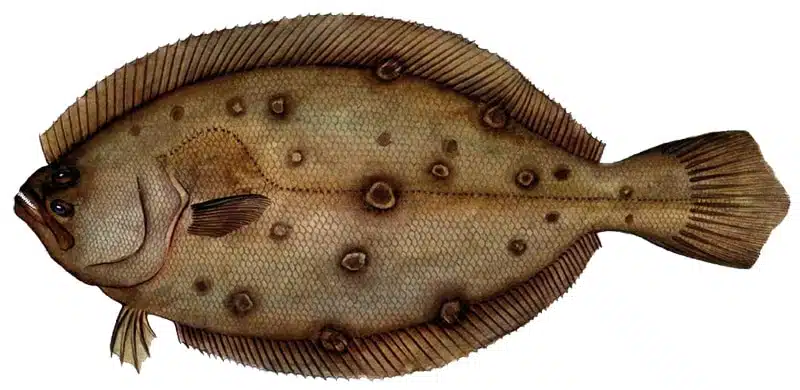
Flounder are one of the most sought after for after fish in our local waters. They are delicious to eat and are fun to reel in. Recently, there has been an increase in the number and in the size of flounder. In Virginia, it is basically an April through November fishing however some are caught in March and December.
Early season activity is found in the coastline channels of Virginia’s Eastern Shore. Wachapreague has a world class fishery that is at its peak season April through June. Summer and Fall are the times to fish the lower Chesapeake Bay. Flounder can be found all through the Chesapeake Bay and in the waterways flowing into it. Certain areas are known for having high numbers of large fish. These include the regions close to the Cell, 36A off of Cape Charles, the Hump, Back River Reef, the channels at the mouth of the narrows, and obviously, the Chesapeake Bay Bridge Tunnel. There are also great fisheries that begin at the mouth of Back River and at the mouth of Lynnhaven Inlet.
The way in to these regions is deep water. Flounder can be found in narrow water, many are caught by Speckled Trout anglers on Poquoson Flats, yet the majority of the larger fish are found closer to nearby deep water.
The most widely recognized technique for fishing for flounder is having bait on the bottom. The apparatus frequently utilized is the high-low bottom fishing rig. The classic lure is a piece of squid and a minnow set on each hook.
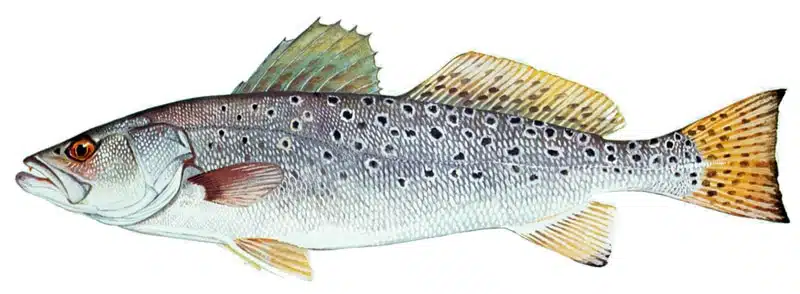
The speckled trout fishing is good inside Lynnhaven and Rudee Inlet areas. Locals say that the fishing inside Lynnhaven is still good with more keeper size fish arriving. Solid reports are also coming from Virginia’s Eastern Shore and the waters around Poquoson, VA. Most of the trout are approximately 14 to 20 inches.
In the Chesapeake Bay, speckled trout are found in very specific habitats and are rarely caught outside of these areas while in the bay. They are most often found in shallow areas where sea grasses are found. They are also caught along the shore near mouths of major creeks and rivers.
Some of the best known areas for catching speckled trout in the Chesapeake Bay are found on the eastern side of the estuary, from the Choptank River down to the Tangier and Pocomoke Sounds. Speckled trout also occur along Virginia’s Eastern Shore and in the southern sections of the Potomac, Rappahannock, York, and James Rivers.
Fishermen rely on a variety of techniques for catching Speckled Trout in the Chesapeake Bay. Some fishermen like to fish with cut bait while others cast or troll artificial lures. They are also targeted by fly fishermen using a variety of saltwater flys.
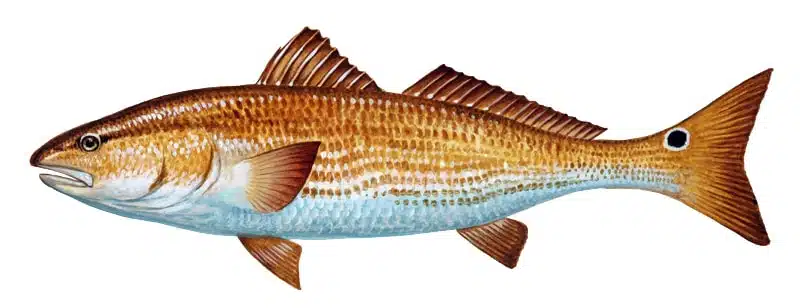
Adolescent red drum, called puppies, like to live in shallow water near shore. Discovering little reds is easy… look wherever that current crosses structure. Oyster beds, sandbars, bogs, swamp points, channel edges and even dock pilings and scaffold supports can hold little puppy drum. Little reds are found along the bayside and oceanside springs and swamps of Virginia’s Eastern Shore, across the Chesapeake Bay on the Middle Peninsula and Northern Neck, and right down to the Bay’s south shore to Hampton Roads and Lynnhaven River. Little reds can even be found in the shoreline surf from Cape Henry to Sandbridge.
At the northern part of the fish’s migration, Virginia has some of the world’s biggest red drum, with bulls that can measure more than 50 inches and weigh in excess of 50 pounds. Far superior, the state’s pup drum population spans up along 3,000 miles of tidal coastline.
From the hard strike and Mack Truck run to the bursting charge of the bulldog final fight, red drum, regardless of their size, are hard fighting fish.
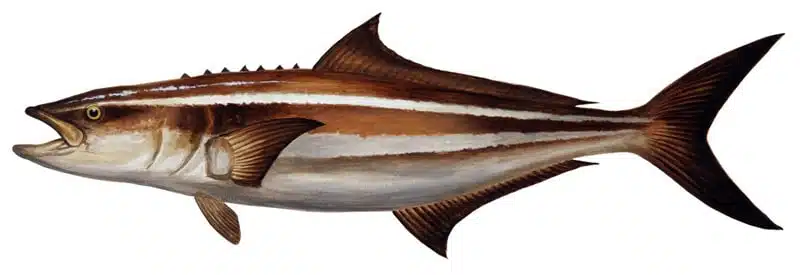
Figuring out how to catch Cobia is one of the most intriguing activities in fishing. Cobia are one of the most well known fish that we have on the East Coast. They are popular for their size. What makes these fish so exciting to catch is the assortment of methods you can use to catch them. Huge numbers of the regular ways to target Cobia are Chumming and Sight Fishing.
One of the most significant things to know when Cobia fishing is the season to target them. In Virginia when the water temperature comes to around 68 degrees Cobia have just arrived. This temperature typically starts the 2nd to 3rd week of May. Cobia will remain in Virginia as a rule until the 1st week of October. At the point when the water temperature drops into the 60s they start to relocate South for the Winter.
The best time to fish for Cobia when you are sight fishing is the point at which the sun is at its highest point. When searching for these fish on the topwater it is hard to see them promptly in the first part of the day and at night. The lower the sun is, the more glare will be put onto the top of the water. You should leave for your Cobia fishing around 10am and fish until 3pm to give yourself the best chance. A significant thing to factor in when sight fishing for Cobia is the mists. When it is overcast it makes it extremely hard to spot fish since the mists increment the glare on the water.
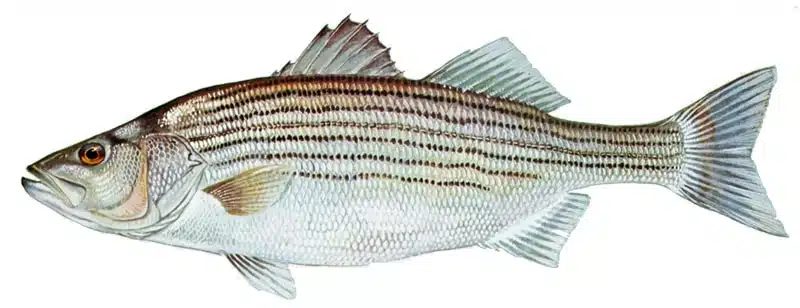
Striped Bass migrate through the lower Chesapeake Bay and Atlantic Ocean. They range in size from 10 to 70 pounds. Many Virginia state records for striped bass have come from these local fishing waters. As the water in the bay gets cooler, the striper fishing gets going!
Striped bass fishing season runs from October 4th until March 31st and then from May 1st to June 15th. During the coastal striped bass season, the action moves to the dock at Rudee Inlet in Virginia Beach, VA. Striped Bass runs can last only a few minutes. The trophy striper fishing out of Virginia Beach is some of the best fishing in the world.
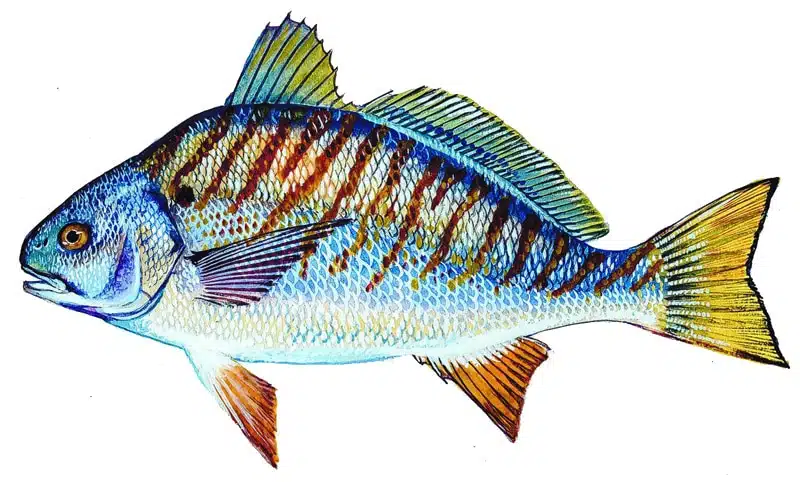
Spot can be found most anywhere, which makes getting access to fishing for them especially easy. Great opportunities for this type of fishing are to be had from many different resources, both water and land. Local tackle shops and piers can help determine when and where the fish are biting best, while information and reports in your local paper can also provide some useful tips. Many areas may also have fishing reports available online. If you don’t have a boat, no problem… just head for the local fishing piers, bridges, jetties, or the surf. You will most likely have company, for when the big yellowbellies show up, so do many locals in order to join in on some of the best spot fishing in the country. Many parents also prefer sticking to land activities with kids for safety and convenience reasons.
Yellowbelly Spot debut around early September, as they start to show in the lower parts of the rivers, then move to more ocean side locations. By about mid to late September, these heavy spot become numerous as they pack into inlets, hang on sandbars, and line structure near lower bay seaside areas. Mussel beds, gravel bottoms, and drop offs are always good places to look for yellowbellies. Although slack tide tends to prove least productive for spot fishing, there is no recommended best tide to try for them. But moving water, especially a few hours before and then a few hours after the change of the tide seems to yield the best luck.
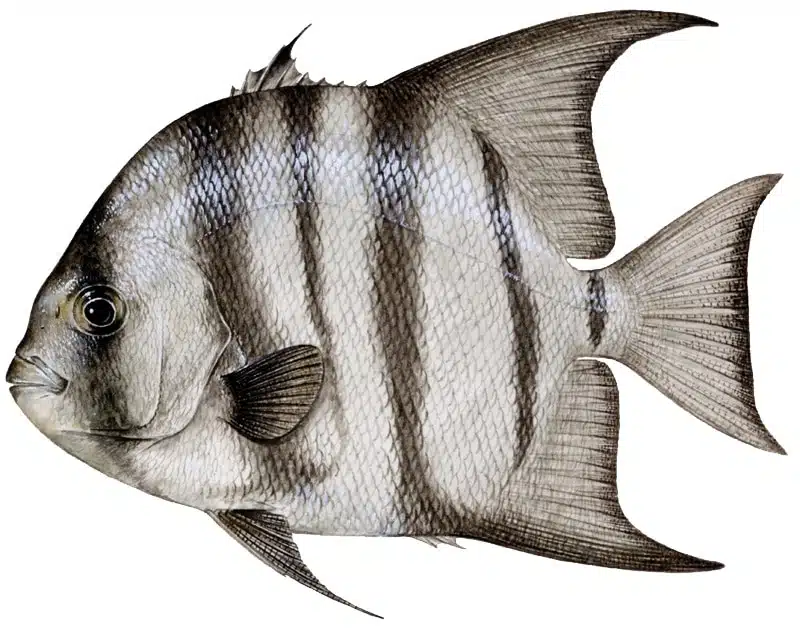
Spadefish are a sport fisherman’s favorite catch because they put up a hard fight as they are reeled in. Add the fact that they’re very finicky eaters and will most likely not touch anything tossed their way on line greater than 15 lb test, they become hard to catch! They can reach large size and can be seen often times cruising around at the surface near the bridge or other structure. They are delicious to eat, tasting a little like Mahi. Most Spadefish caught are small and juveniles and are nowhere near the maximum size recorded for their species.
A 13-pound, 5-ounce spadefish (right) caught on May 29th 2006 is the certified new Virginia state record.
Spadefish are in local waters June through September. They can be found anywhere there is structure from the Atlantic wrecks to the middle bay. Some of the best areas are the Cell, CBBT, Plantation Light, York Spit Light, the buoys at the mouth of the bay, the Chesapeake Light Tower, Tower Reef, and any wreck. The 4A buoy at the mouth of the bay is the most popular, though any buoy in the area can hold spadefish.
The easiest times to catch spadefish are during low current and calm seas when the fish can often be seen fining on the surface. If you move slowly, you can drift effectively, but most often you need to anchor. The bait of choice is clam, although squid will work when the fish are more aggressive. You will hear that spadefish are caught on small pieces of clam but don’t be afraid to use a good sized piece when large spades are around.
In the Spring the most common fish to catch are bottom fish with bait. Bloodworms, Squid and Shrimp are all used. Double bottom rigs are favored by most pier and surf fishermen

Find out what is going on in Virginia Beach! Get the latest updates on news, events, discounts/specials and many more things in Virginia Beach!